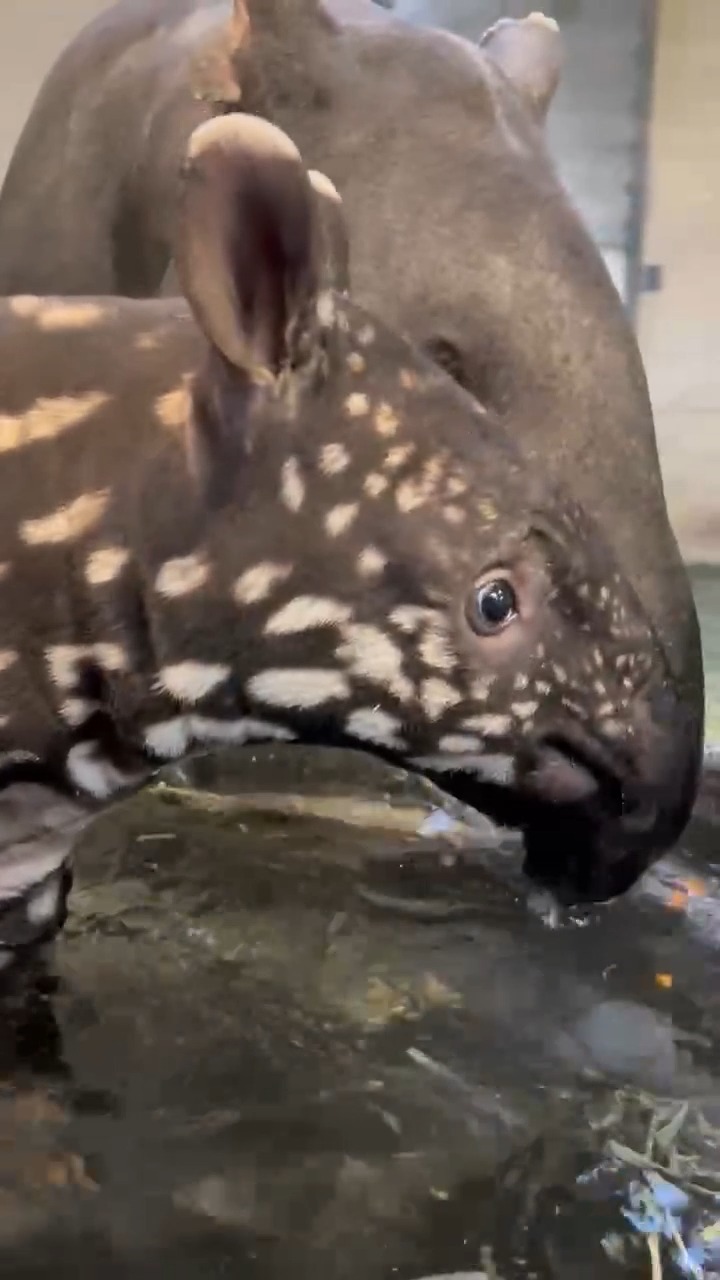- Overview of Ume, the tapir calf’s current stage in development and swimming habits.
- Insights into tapir habitats and how they adapt to aquatic environments.
- Understanding the significance of playful behaviors for juvenile tapirs.
- Exploration of zoo conservation efforts for tapirs and their environmental impact.
- Role of animal keepers in nurturing young tapirs’ growth and enrichment.
Ume, a charming tapir calf, is capturing the hearts of keepers and visitors alike with her playful antics in her baby pool. Although not yet ready for the larger pool, Ume’s interactions with water illustrate an important developmental phase. Her willingness to splash around showcases a natural behavior significant to tapir calves. This early interaction with water is critical for their growth, allowing them to strengthen their muscles and improve coordination. Young tapirs, like Ume, spend a considerable amount of time engaging with their environment, which is essential for their mental and physical development.
Tapirs are fascinating creatures known for their unique adaptation to both land and aquatic habitats. Native to Central and South America, tapirs thrive in rainforest environments where water bodies are abundant. Their semi-aquatic nature allows them to find food and evade predators efficiently. Tapirs have compact, sturdy bodies and a specialized trunk-like nose, which helps them to forage underwater for aquatic plants and leaves. These adaptations also serve them well in zoos, where they are provided with environments that mimic their natural habitat, ensuring they can engage in their natural behaviors.
The act of playing is more than just fun for Ume. It plays a crucial role in her development. Playful behavior in tapir calves is beneficial for various developmental aspects. It enhances their cognitive skills, encourages exploration, and fosters social interactions if other tapirs are involved. For Ume, the baby pool is a safe place to practice new skills, develop confidence in the water, and display behaviors that are innate to tapirs. Mimicking their natural environments within a zoo setting is key to promoting these natural behaviors.
Zoo conservation efforts are integral to the survival of species like Ume. Tapirs are classified as vulnerable due to deforestation and hunting in their native regions. Modern zoos engage in numerous conservation programs, balancing in-situ and ex-situ strategies to ensure survival. Breeding programs, like the one Ume is part of, aim to maintain genetic diversity and raise awareness about the species. Environmental education programs highlight the importance of sustaining tapir habitats and ecosystems, fostering a new generation of conservationists.
Behind the scenes, animal keepers play a vital role in the care of tapir calves. Their responsibilities include creating enriching environments, managing diets, and facilitating health checks. For Ume, Keeper Katie ensures her environment is stimulating and safe, promoting exploration and active learning. By observing and interacting daily, keepers can monitor her development closely and adjust care techniques to her evolving needs. They are instrumental in supporting Ume’s transition from her baby pool to larger bodies of water as she grows.
Ume the tapir calf represents the future of her species, blending the enchanting aspects of youth with significant conservation efforts. Her journey, from splashing in a baby pool to eventually taking the plunge in a larger one, is a reflection of significant biological and environmental strides being made to protect tapirs in the wild and in zoos.
*****
Source Description
Ume the tapir calf may not be ready to take the plunge into her big pool just yet, but behind the scenes, she’s having a blast in her baby pool! 💦 She loves splashing around and standing in the water at her own pace.
📹: Keeper Katie


